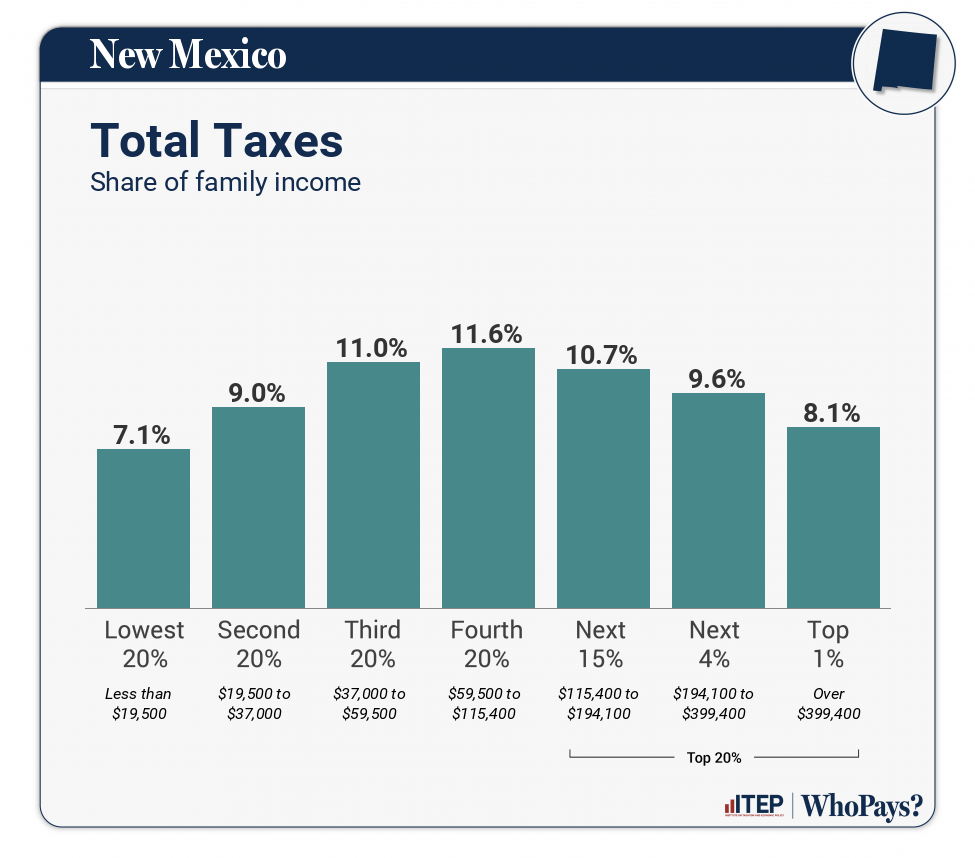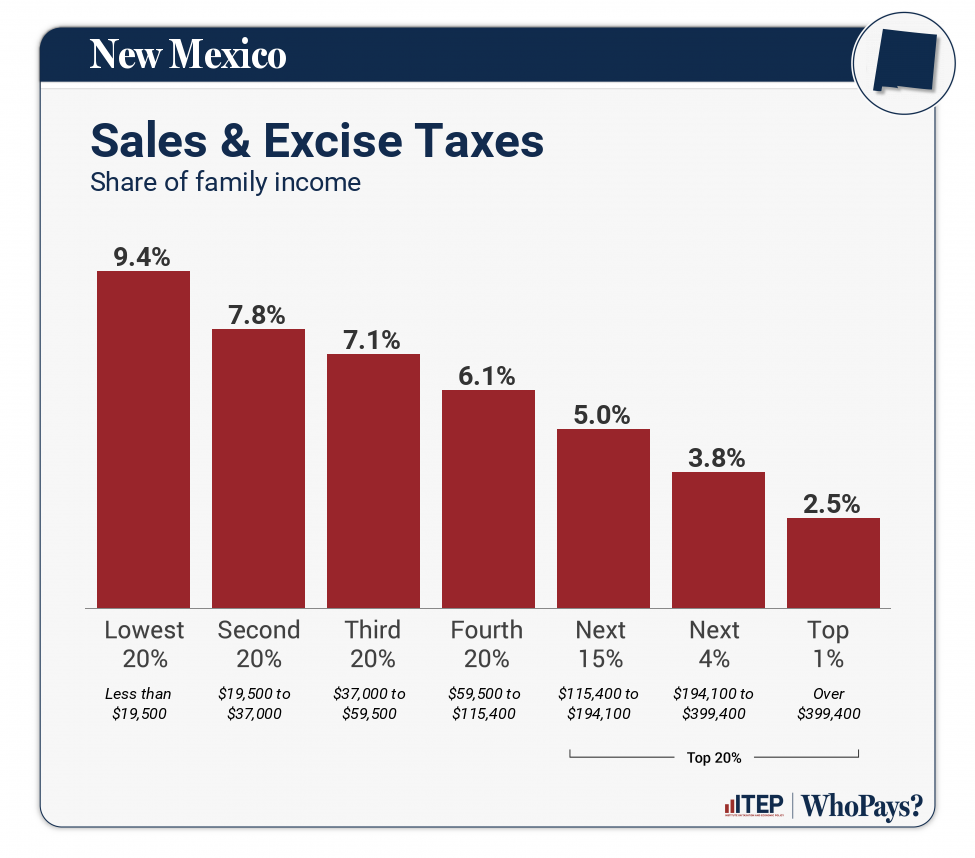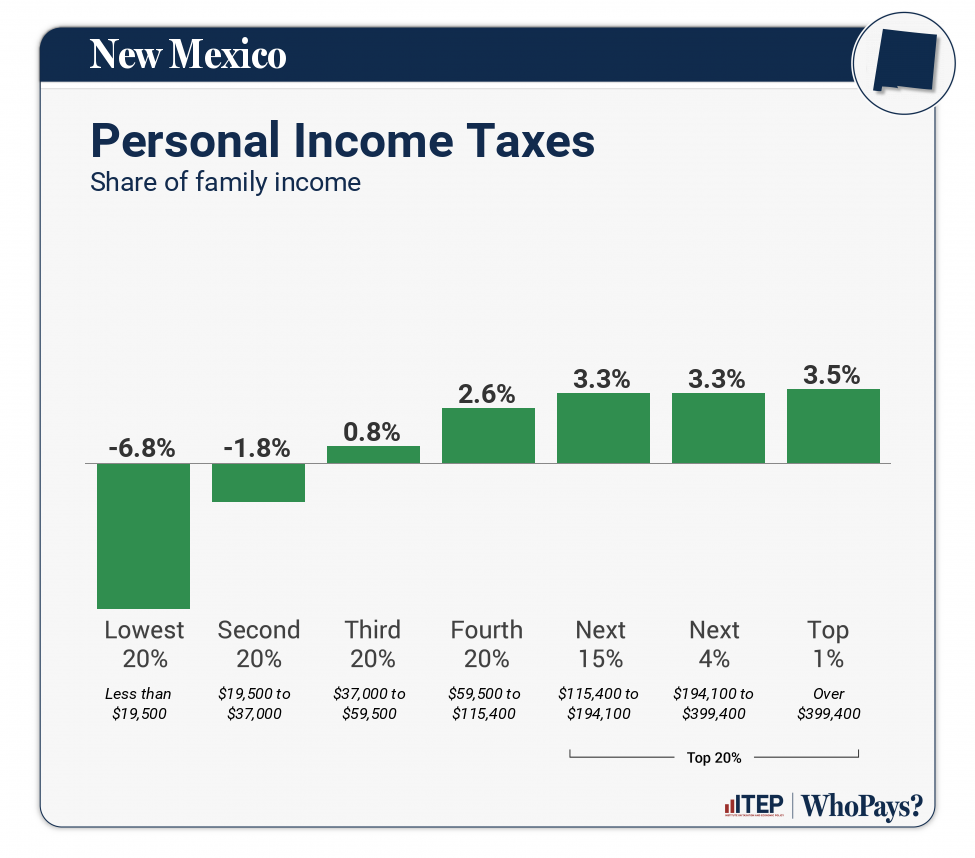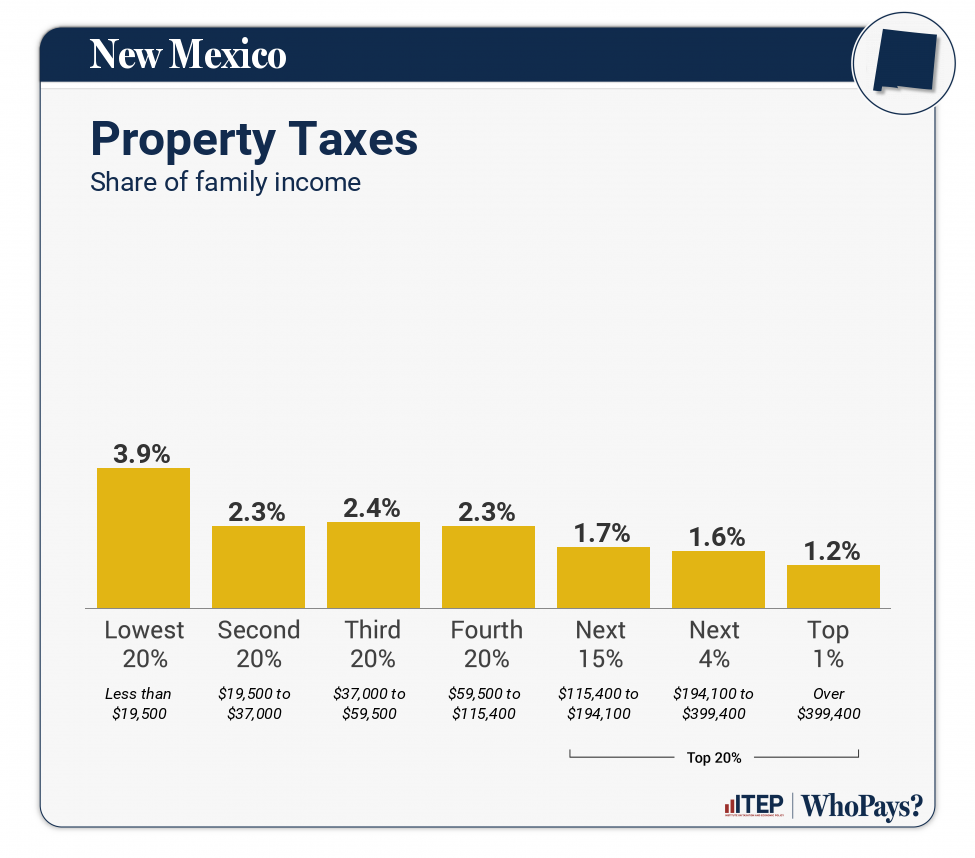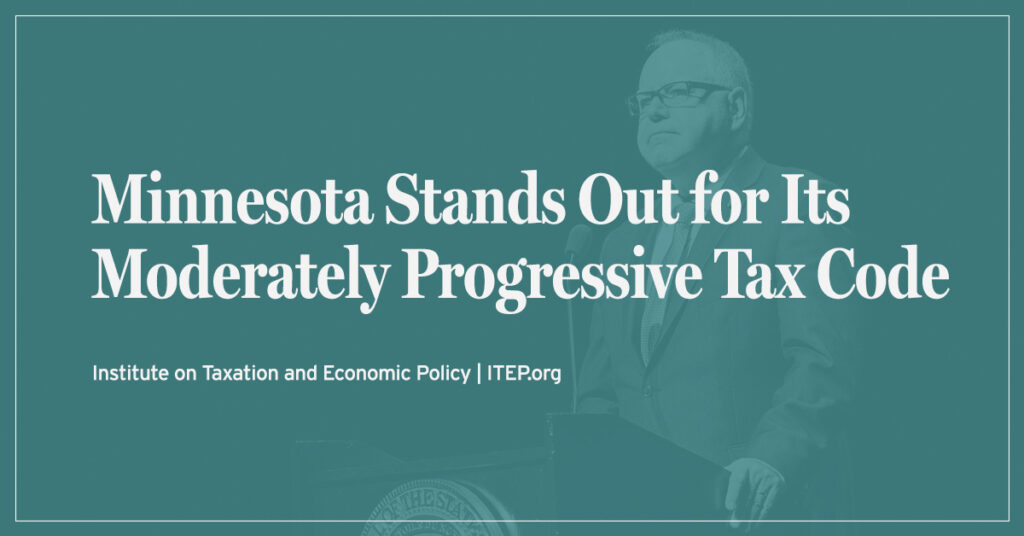
New Mexico
Download PDF
State and local tax shares of family income
| Top 20% | |||||||
| Income Group | Lowest 20% | Second 20% | Middle 20% | Fourth 20% | Next 15% | Next 4% | Top 1% |
| Income Range | Less than $19,500 | $19,500 to $37,000 | $37,000 to $59,500 | $59,500 to $115,400 | $115,400 to $194,100 | $194,100 to $399,400 | Over $399,400 |
| Average Income in Group | $10,200 | $27,100 | $47,300 | $81,900 | $143,900 | $257,900 | $648,700 |
| Sales & Excise Taxes | 9.4% | 7.8% | 7.1% | 6.1% | 5% | 3.8% | 2.5% |
| General Sales–Individuals | 3.7% | 3.4% | 3.1% | 2.7% | 2.1% | 1.5% | 0.8% |
| Other Sales & Excise–Ind | 2.5% | 1.5% | 1.3% | 1% | 0.7% | 0.5% | 0.3% |
| Sales & Excise–Business | 3.1% | 2.9% | 2.7% | 2.4% | 2.1% | 1.8% | 1.4% |
| Property Taxes | 3.9% | 2.3% | 2.4% | 2.3% | 1.7% | 1.6% | 1.2% |
| Home, Rent, Car–Individuals | 3.5% | 2% | 2% | 2% | 1.3% | 1.2% | 0.6% |
| Other Property Taxes | 0.3% | 0.4% | 0.4% | 0.3% | 0.4% | 0.4% | 0.5% |
| Income Taxes | -6.7% | -1.7% | 0.9% | 2.7% | 3.3% | 3.3% | 3.6% |
| Personal Income Taxes | -6.8% | -1.8% | 0.8% | 2.6% | 3.3% | 3.3% | 3.5% |
| Corporate Income Taxes | 0.1% | 0.1% | 0.1% | 0.1% | 0.1% | 0.1% | 0.1% |
| Other Taxes | 0.6% | 0.6% | 0.6% | 0.5% | 0.7% | 0.7% | 0.9% |
| TOTAL TAXES | 7.1% | 9% | 11% | 11.6% | 10.7% | 9.6% | 8.1% |
| Individual figures may not sum to totals due to rounding. | |||||||
ITEP Tax Inequality Index
New Mexico has a hybrid system that is progressive through the bottom part of the income distribution and regressive through the top part. On balance, the overall system tilts regressive because high-income families pay lower tax rates than most groups. According to ITEP’s Tax Inequality Index, New Mexico has the 43rd most regressive state and local tax system in the country, meaning that seven states and the District of Columbia have more progressive systems. Income disparities between high-income taxpayers and most other families are larger in New Mexico after state and local taxes are collected than before. (See Appendix B for state-by-state rankings and the report methodology for additional detail.)
Tax features driving the data in New Mexico
|
Requires combined reporting for the corporate income tax but excludes profits booked overseas, including in tax haven countries
Refundable Earned Income Tax Credit (EITC)
Graduated personal income tax structure
Refundable dependent care tax credit
Refundable Child Tax Credit (CTC)
Sales tax base excludes groceries
Refundable low-income tax credit
|
|
|
No property tax “circuit breaker” credit for low-income, non-senior taxpayers
Comparitively high reliance on general sales (gross receipts) taxes
First four personal income tax brackets are relatively compressed
Does not levy a tax on estates or inheritances
Provides a capital gains tax preference
Offers itemized deductions
|

